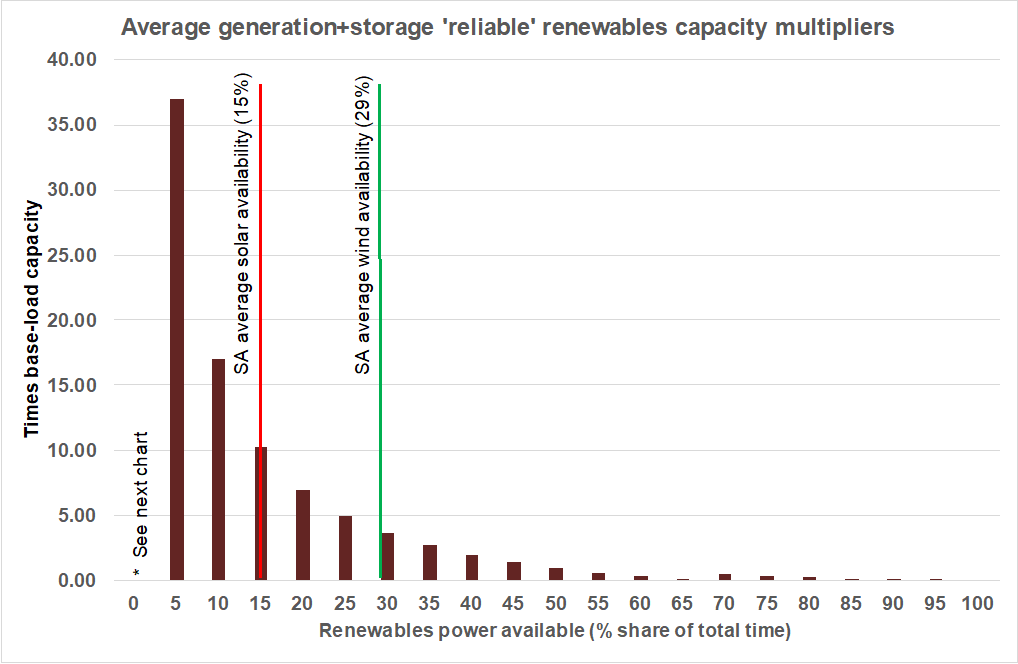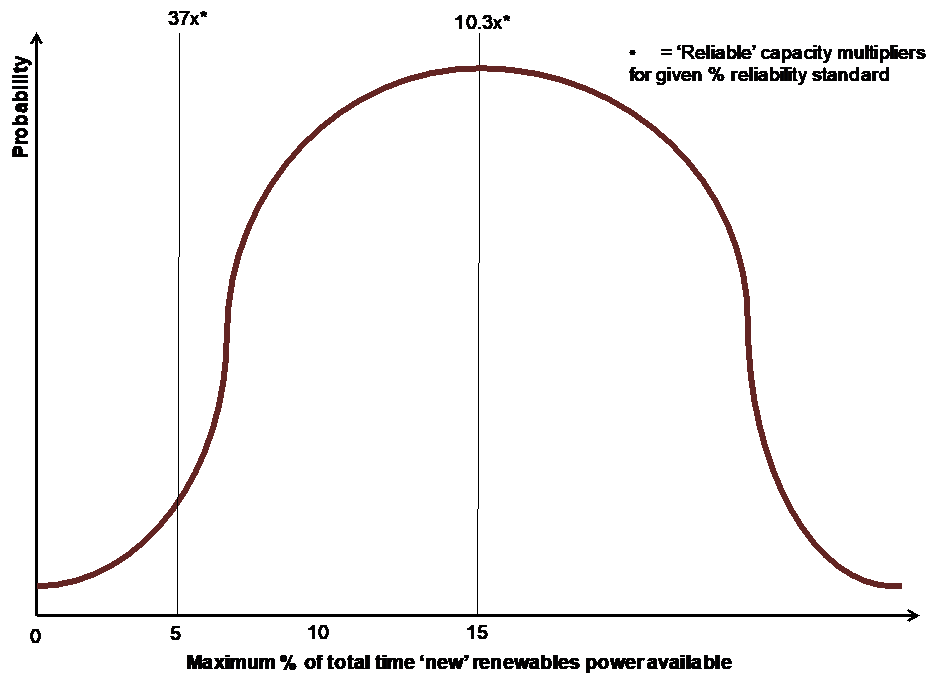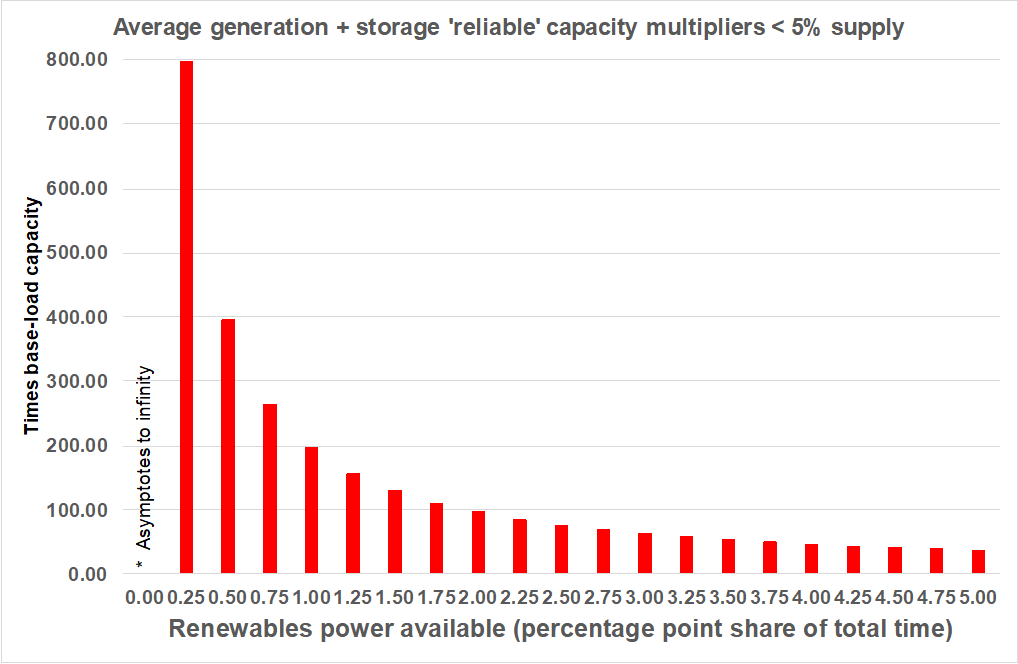Geoff Carmody* 26.07.18
The 'reliable' renewables roulette wheel is spinning as its share of power generation increases. Keep an eye out for an effective downgrading of the current NEM reliability standard if any NE'G' gets the COAG nod. Don't hold your breath for significant or sustained affordability improvements, either.
Advertisement
The Australian Energy Market Operator (AEMO) has released a report proposing Australia's existing coal generators be operated as long as possible to prevent a price surge in the transition to 100% renewables-only power. It says ageing coal generators will deliver the cheapest reliable power for the next 20 years. It 'kicks the coal closure can down the road'. But it reinforces longer-term expectations already favouring 'new' renewables investment (solar, wind, batteries), and against fossil fuels, for generation capacity expansion.
If we eventually replace all current base-load power generation with 'new' renewables, as envisaged by AEMO, what happens to reliability and affordability of our power supply? Focus on reliability: costs follow. The inherent intermittency of solar and wind power is accompanied by uncertainty about when such power will be 'on' or 'off'. The switches determining this – the solar cycle and the weather – are beyond our control.
Averageofficial 'efficiency' ratings for a year, such as those I've previously cited for South Australia for 2016-17, don't tell the full story. Around those 15% ratings for solar, and 29% for wind, there are probability distributions for lower and higher 'efficiency' ratings within-year. For example, very cloudy days may last for many days (ditto very sunny days, of course). Wind cycles, similarly, can vary a lot around yearly averages.
Generation plus storage capacity multipliers needed for given reliability standards, using 100% 'new' renewables as base-load and back-up, are shown in the chart below. This covers reliable renewable power availability from 5% up to 100% of the time (at 100% availability, the 'new' renewables capacity multiplier falls to zero, of course). For example, if power outages cannot exceed 5% – power is reliably available 95% of the time – 'new' renewables generation plus storage must cover situations where their 'efficiency' ratings fall as low as 5%. Average annual 'efficiency' ratings for solar and wind in SA in 2016-17 are also shown.

Around any solar or wind year-average 'efficiency' ratings, there are probability distributions reflecting the inherent uncertainty of 'new' renewables intermittency (see figure below using SA solar in 2016-17 as an example). Higher and lower 'efficiency' ratings within each year are the norm. How should Australian power grids deal with these 'efficiency' variations if, as proposed by the AEMO, they are required to replace all current cheap base-load generation with 'new' renewables?
Advertisement
Enter the quantitative reliability standards set for the NEM. Since 1998, the NEM reliability standard is no more than 0.002% unavailability of power within any grid area each financial year. That's unavailability of 2 MWh out of every 100,000 MWh. This is a challenging standard for non-renewables. For a renewables-only power grid it's impossible. As shown in the chart above and the figure below, if the NEM outage standard is increased 2,500 times from 0.002% to 5%, the required generation plus storage renewables capacity multiplier in a 100% 'new' renewables world is up to 37 times. Delivering 5% (un)reliability costs a lot.
Figure: illustrative probability distribution for SA solar reliability in 2016-17 (% of time available)

Set a reliability standard closer to 0.002% outages. With an outages maximum of 0.25% of the time – 125 times less reliable than the current standard – the generation plus storage capacity multiplier is up to 797times base-load. See chart below. This chart shows average generation plus storage capacity multipliers within the zero to 5% renewables availability share range not shown (for scale reasons) in the chart above.

The politics of 'keeping the lights on' implies retaining the 0.002% standard. With 100% 'new' renewables, a generation and storage capacity multiplier of almost 100,000 times base-load capacity would be needed.
The foregoing is based on a RET of 100%. The inter-state energy-dependent ACT government might go on posturing this is its target. Producers of renewable energy beyond its border should get any 'green' credit.
Nationally, politicians are promising less than 100% RETs: 45% (Federal Labor), 26% or so (Federal Coalition). Is the arithmetic any better if we go below 100% 'new' renewables? See table below.

Even if we accept an increase of 7,500 times, to a maximum of 15% outages, as a new reliability standard, capacity multipliers are sizeable. And a 15% unreliable power grid would be unacceptable.
Such extreme reliability requirements very rarely would be needed. Is that the point? Our 0.002% reliability standard covers very unlikely power outages with base-load power, too. Outages will become much more likely with 25%, 30%, 45% or 100% renewables than now. What's the cost of insuring against them?
I don't think we can maintain the current 0.002% NEM reliability standard, or anything approaching that, if we insist on using 'new' renewables as base-load and back-up power supply. It's prohibitively expensive. The arithmetic of renewables' uncertain intermittency will collide with existing reliability standards and concerns about rising power prices. Insisting, 20 or so years in future, on up to 100% replacement of existing base-load and back-up power sources with 'new' renewables, makes this inevitable. Additional 'poles and wires' will cost extra. Ditto the chilling of investment in new base-load capacity now and in the years ahead.
I think the 'official family' is well aware of this asymptotic arithmetic. Capacity multipliers approaching 37 times, 800 times, or 100,000 times base-load capacity, or even less than half these numbers, are impractical and unaffordable. Why else do we now see a new list of energy market buzz-words intended to obscure the blow to the voter as we descend more and more into 'new' renewables power dependence?
These days we hear a lot about 'demand response'. This is a euphemism for rationing supply because we haven't enough. There's talk of 'behind the meter' adjustments in a 'distributed generation' system. This is code for taking house-holds' own-generated power (for which they paid a lot in capital costs) because the grid is short of it. There's been talk of asking (forcing?) large energy users to own-provide for their power needs to secure grid reliability. That's code for off-loading grid investment responsibilities to big users. The punter will still pay when the costs of doing so are passed on to local consumers. But it'll be less obvious. The reliability burden may be off-loaded to retailers and others who may be required to contract for 'firm' power supply. They might get the blame, and we'll pay the costs, if things go wrong. Watch out, too, for substantial new investment in inter-state interconnectors and more 'poles and wires' generally. These reflect attempts to spread the outage risks of renewables intermittency across the NEM as another response to the capacity problems noted above. Remember 'poles and wires'? Not so long ago these were loudly blamed for power costs because of 'gold plating'. Now we're likely to pay more for them.
The big response to this awful arithmetic? Probably, change the reliability goal posts. Accept less reliable power. Naturally, this will be effected in the most opaque manner possible.
If the National Energy 'Guarantee' (NE'G') includes AEMO's advice on new capacity investment, it may simply guarantee conversion of the Government's 'trilemma' into a trifecta. More expensive and less reliable power is likely to follow. We won't make a jot of difference to global emissions, either.
Hitherto we've ruled out any alternatives to renewables.
What alternatives are there? This is worth an opinion piece in its own right. A smorgasbord follows:
- Retain fossil fuel base-load, at least until technology makes equally-reliable alternatives cheaper.
- Duplicate market penetration of 'new' renewables with base-load power (less costly reliability?).Move to nuclear power: small modular reactors ASAP, and larger-scale versions later.
- Look at natural hydro: probably works best only in Tasmania (barring drought there).
- In selected regions, look at geothermal power? Learn lessons from other countries where it works.
- To make any of these investment-attractive, eliminate all renewables subsidies (technology-neutrality).
When trying to mix renewables with reliability, politicians face biased incentives. The consequences of not supplying enough capacity for a given reliability standard emerge after the event. They get mixed up with (and are blamed on) all sorts of other influences. The fall-out can be very bad (eg, SA and Olympic Dam in 2016). We all end up paying, but don't know precisely why. The costs of insuring, up-front, against breaches of any given reliability standard are reasonably clear, can be very expensive for 'new' renewables, and, especially before the events occur, aren't welcomed by those required to pay the insurance 'premiums'.
Politicians, focussed on cutting power costs right now, might gamble on under-insuring for reliability targets.
The 'reliable' renewables roulette wheel is spinning as its share of power generation increases. Keep an eye out for an effective downgrading of the current NEM reliability standard if any NE'G' gets the COAG nod. Don't hold your breath for significant or sustained affordability improvements, either.